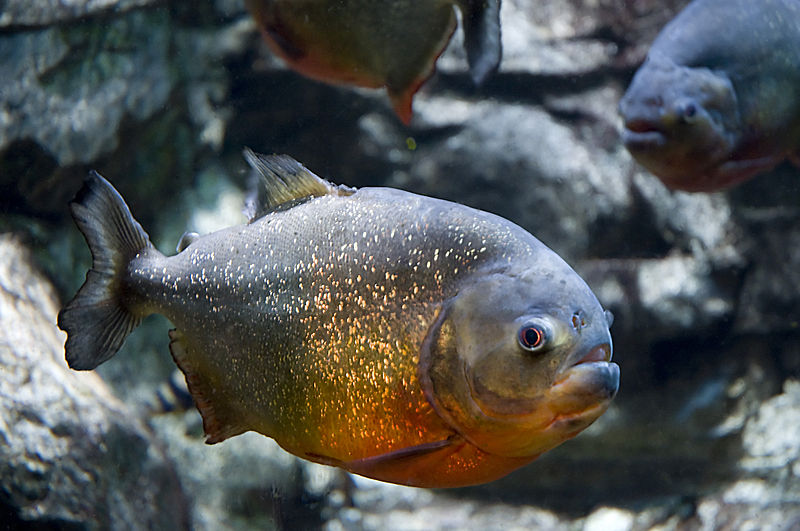 Hello, Frank Indiviglio here. With the movie Piranha 3D in theaters, I though now might be a good time to write a bit about how wild Red-Bellied Piranhas (Pycocentrus nattereri) actually behave. Unfortunately, no matter how outlandish the movie may be, there are people who will retain what they see and regard it as fact. I still recall that, for months after the movie Anaconda premiered, I was deluged with calls from viewers spouting the strangest “facts” (I was working at the Bronx Zoo at the time…management had been approached by the movie’s production company, but had declined to become involved).
Hello, Frank Indiviglio here. With the movie Piranha 3D in theaters, I though now might be a good time to write a bit about how wild Red-Bellied Piranhas (Pycocentrus nattereri) actually behave. Unfortunately, no matter how outlandish the movie may be, there are people who will retain what they see and regard it as fact. I still recall that, for months after the movie Anaconda premiered, I was deluged with calls from viewers spouting the strangest “facts” (I was working at the Bronx Zoo at the time…management had been approached by the movie’s production company, but had declined to become involved).
Finding Piranhas and Piranha Victims
For several years, I made annual trips to Venezuela’s western llanos country in order to assist with a Green Anaconda field research project. My stays occurred during the dry season, when the depressed water levels made finding the snakes, as well as Red-Bellied Piranhas and other creatures, quite simple (simple, that is, if you don’t mind kicking about murky water swarming with Electric Eels, Caiman, Crocodiles, Stingrays, Piranhas, Anacondas and other beasts that do appreciate being bothered, even in the name of science!).
Make no mistake…Piranhas can and do bite, and I met several people who bore scarred legs to prove it…indeed, one of the local names for the Piranha refers to the damage they sometimes inflict on bulls that cross rivers at inopportune times! I even collected an Anaconda that, judging by the shape of the recent wound it carried, seemed to have been attacked by several Piranhas (please see photo).
Dangerous Waters
Through numerous conversations with people who made their living raising cattle on the llanos and fishing in Piranha-rich waters, I learned that the fishes were most likely to attack large animals when water levels are very low. It may be stress, lack of food or other factors, but everyone avoids shallow pools towards the end of the 6-month-long dry season.
I and my co-workers spend hundreds of hours in waters heavily populated by Red Bellies, and suffered no bites – but we definitely stayed out of areas that local folks warned might be dangerous. When all was said and done, accidentally grabbing an Electric Eel and being chased by Killer Bees proved more problematic than Piranha attacks!

Bird-Eating Piranhas
Water below wading bird rookeries represents another potentially hazardous situation for people. The rookeries I visited in Venezuela eclipsed anything I had seen elsewhere or read about – thousands of Scarlet Ibis, Roseate Spoonbills and other large, colorful birds all gathered in one place.
I’ll explain how this translates into a danger for people in Part II of this article. I’ll also describe a Piranha feeding frenzy, and relate the story of a pet bird-eating fish of another species.
Please write in with your questions and comments.
Thanks, until next time,
Frank Indiviglio
Further Reading
Please check out our series of articles on Piranha care and behavior.
For more on collecting and studying animals in the Piranha’s habitat, please see Hunting Anacondas in Venezuela and The Green Iguana on the Venezuelan Llanos.
 That Fish Blog – Aquarium Advice and Information
That Fish Blog – Aquarium Advice and Information

You know, I’ve actually seen this movie in 3D and I have to say I was disturbed. Piranhas are no laughing matter. They are seriously destructive. Thanks for the extra info!
I actually have a friend that owns red belly Piranhas and actually when it is the only one in the tank it is pretty chicken. Yes Piranhas have teeth and do bite, but the movie is fiction and I agree with the author of this article and the rest on Piranhas.